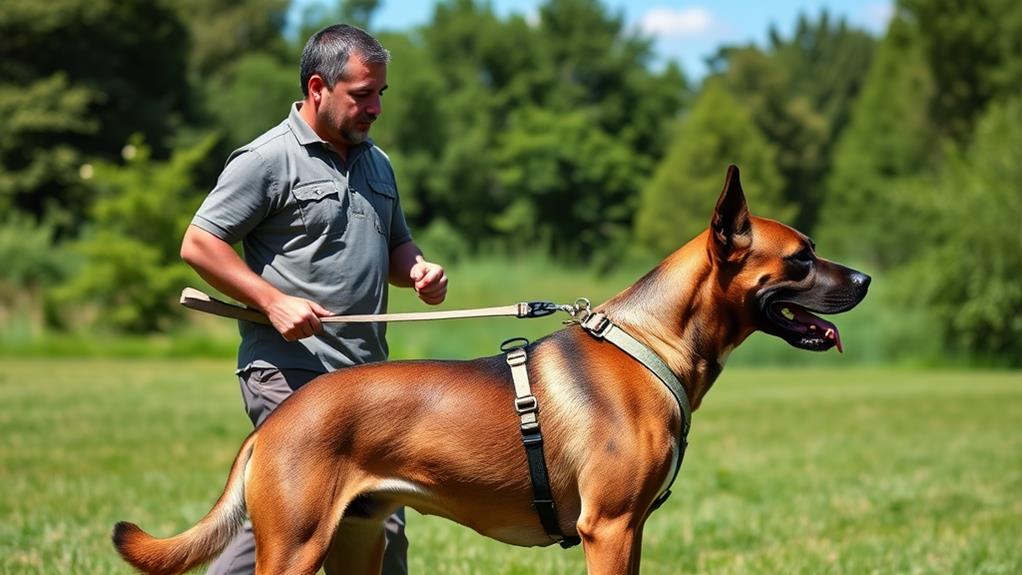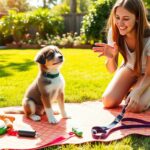To curb canine aggression, focus on understanding the triggers and warning signs in your dog. Create a safe environment by removing stressors and establishing clear boundaries. Use positive reinforcement techniques, like rewarding calm behavior with treats and praise, to build trust and encourage good habits. Socialize your dog with friendly canines and expose them to new environments through structured outings. Consistency in training is key; practice daily and maintain patience as your dog learns. As you explore further, you'll gain insights on additional strategies to enhance your training approach and foster a more harmonious relationship.
Understanding Canine Aggression
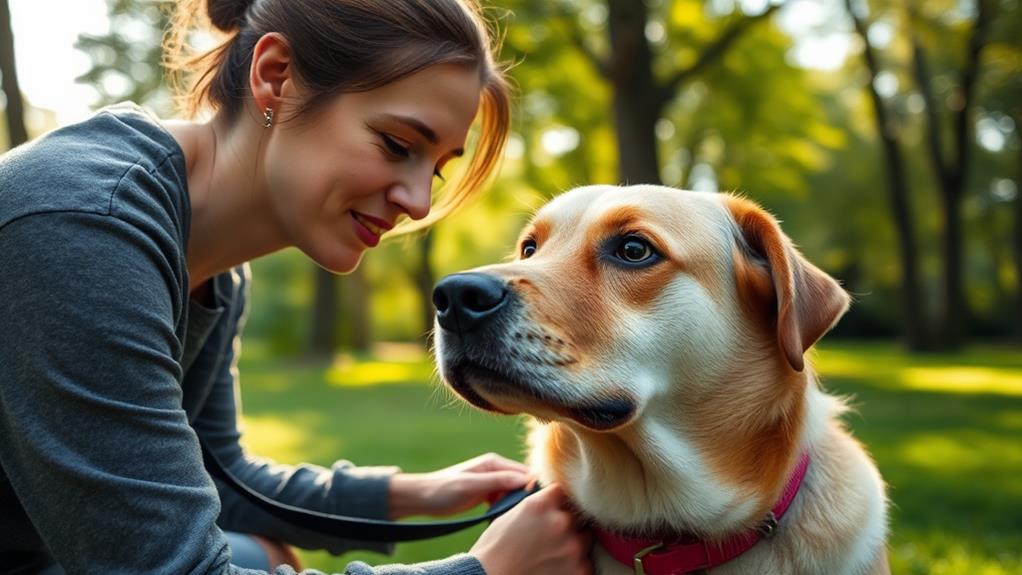
Understanding canine aggression is essential for any dog owner. It's critical to recognize that aggression isn't just about being mean; it's often a response to fear, anxiety, or stress. Your dog might feel threatened in certain situations, leading to growling, barking, or even biting. By grasping the underlying reasons for this behavior, you can better manage and train your dog.
Aggression can manifest in various forms, including territorial, possessive, or fear-based aggression. Each type requires a different approach, so knowing what motivates your dog is key. For example, if your dog shows aggression when someone approaches their food, you'll need to address that specific trigger.
You also have to remember that aggression can escalate if not addressed early on. Ignoring the signs might lead to more severe issues down the line. Instead, focus on building a trusting relationship with your dog. Positive reinforcement, patience, and consistent training can help mitigate aggressive tendencies.
Understanding canine aggression isn't just about identifying bad behavior; it's about fostering a safe and loving environment for both you and your dog. With the right knowledge and tools, you can guide your dog toward more positive interactions.
Identifying Triggers and Warning Signs

To effectively manage your dog's aggression, it's crucial to identify triggers and warning signs that precede aggressive behavior. Recognizing these cues can help you intervene before situations escalate. Start by observing your dog closely in various environments to pinpoint what sets them off.
Body Language: Look for signs like raised hackles, stiff posture, or a tucked tail. These physical cues often signal discomfort or fear, indicating your dog may react aggressively.
Environmental Factors: Pay attention to specific situations that provoke aggression, such as unfamiliar people, other dogs, or loud noises. Noting these will help you anticipate and manage your dog's behavior.
Contextual Situations: Keep an eye on your dog's behavior during particular activities like eating, playing, or being approached while resting. These scenarios can heighten anxiety and lead to aggressive actions.
Establishing a Safe Environment
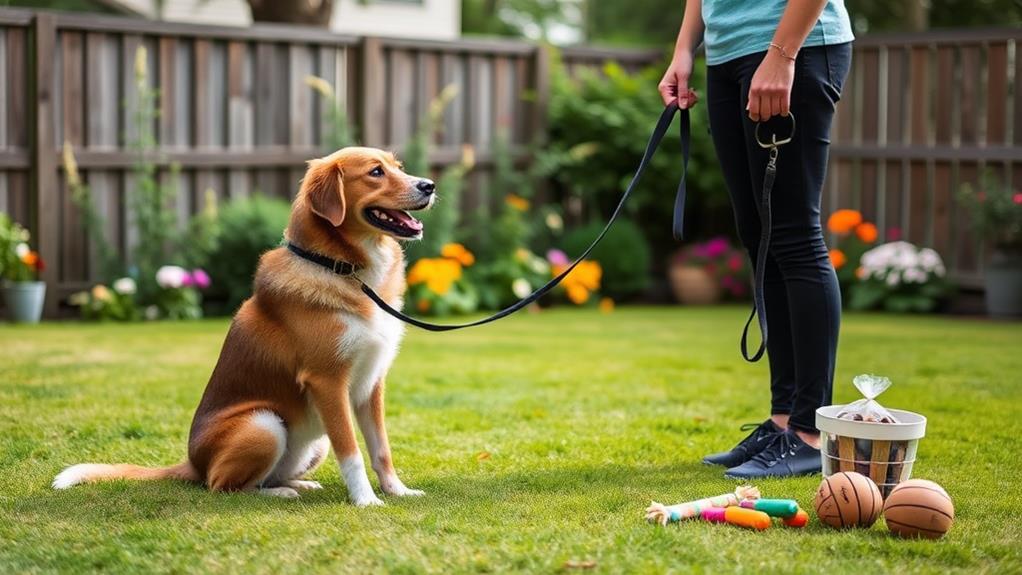
Creating a safe environment for your dog is essential in managing aggression effectively. Start by identifying and removing potential stressors from your dog's surroundings. This might include loud noises, unfamiliar animals, or crowded spaces that could trigger a defensive response. Make certain your home is a sanctuary where your dog feels secure.
Establish clear boundaries in your home. Use baby gates or crates to limit access to certain areas, especially when guests arrive or during high-stress situations. This helps your dog feel more in control and reduces anxiety, which can lead to aggressive behavior.
Consider your dog's space. Provide a designated area where they can retreat when they feel overwhelmed. This safe zone should be comfortable and stocked with their favorite toys and bedding.
Regularly assess your dog's environment, especially if you notice changes in their behavior. Be proactive in adjusting their space to ensure it continues to meet their needs. By creating a safe and predictable environment, you're helping your dog feel secure, which can dramatically reduce their aggressive tendencies. Remember, a calm dog is less likely to react aggressively.
Positive Reinforcement Techniques
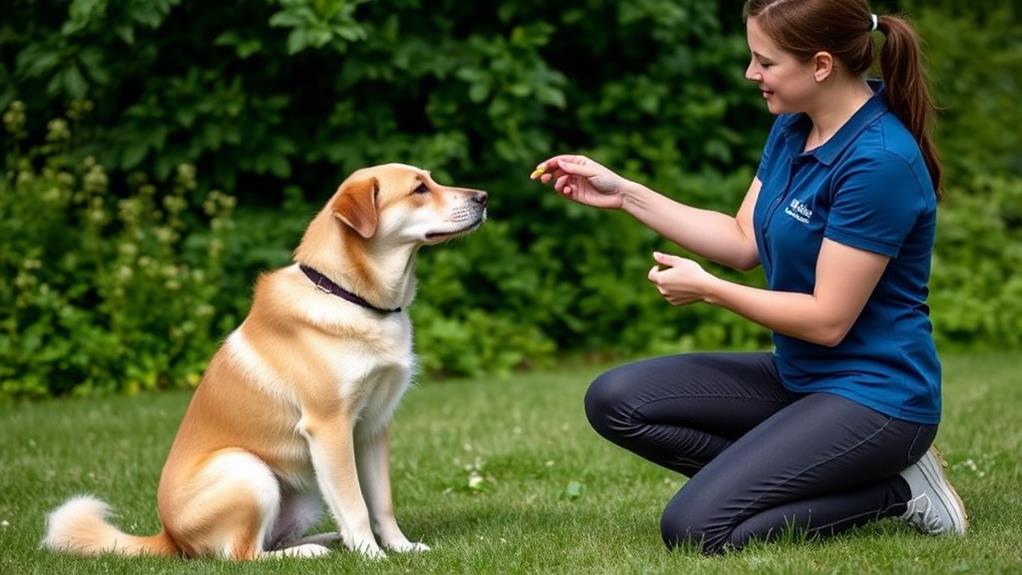
Positive reinforcement techniques are powerful tools for curbing canine aggression and fostering good behavior. By rewarding your dog for positive actions, you encourage them to repeat those behaviors. This approach builds trust and strengthens your bond, making training more effective.
Here are three effective positive reinforcement strategies you can use:
- Treat Rewards: Use small, tasty treats to reward your dog immediately after they display calm behavior. For example, if your dog remains calm when encountering another dog, offer a treat right away.
- Verbal Praise: Your voice holds power! When your dog behaves positively, use a cheerful tone to praise them. Saying "Good boy!" or "Well done!" can reinforce their good behavior and boost their confidence.
- Playtime: Incorporating play as a reward can be incredibly effective. If your dog responds well to commands, immediately engage them in a fun game of fetch or tug-of-war.
Socialization Strategies
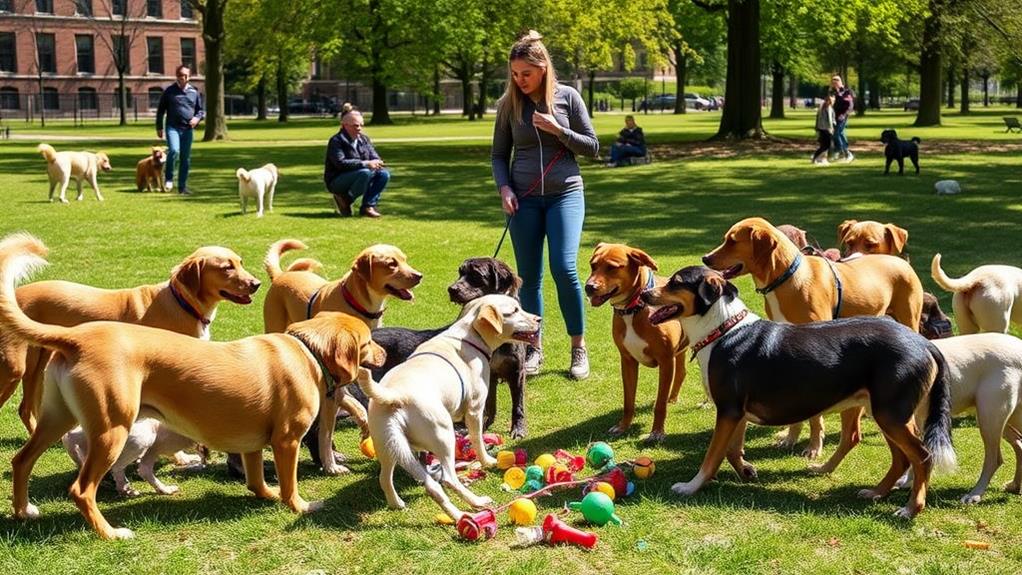
During the pivotal early months of a dog's life, socialization plays a paramount role in reducing aggression. By exposing your pup to various environments, people, and other animals, you help them learn appropriate social behaviors. Start by introducing your dog to friendly, calm dogs. Positive interactions can build their confidence and reduce fear-based aggression.
Use a structured approach to socialization. Here's a simple table to guide you:
| Activity | Purpose | Frequency |
|---|---|---|
| Puppy Playdates | Encourages interaction | Weekly |
| Public Outings | Exposes to new environments | Twice a week |
| Training Classes | Teaches commands and manners | Ongoing |
Engage in these activities regularly. Socialization isn't a one-time event; it's an ongoing process that helps your dog become well-adjusted. Monitor your dog's reactions during interactions, and always reward positive behavior with treats or praise. If your dog shows signs of discomfort or aggression, remove them from the situation and try again later. Remember, the goal is to create positive experiences that can prevent aggressive behavior down the line.
Consistent Training Routines
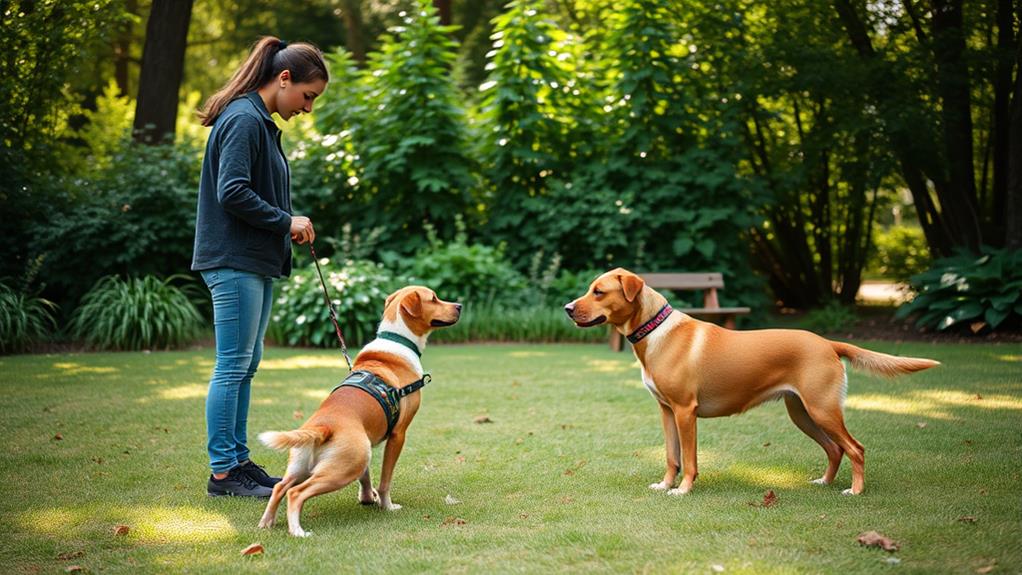
A dog's success in overcoming aggression often hinges on consistent training routines. Establishing a structured approach helps your dog understand expectations and reduces anxiety.
Regular Training Sessions: Schedule daily training sessions that last 10-15 minutes. Consistent practice helps reinforce commands and builds a strong bond between you and your dog.
Clear Commands: Use simple, clear commands that you repeat consistently. This clarity aids your dog in understanding what behavior is expected, reducing confusion and frustration.
Positive Reinforcement: Always reward good behavior with treats, praise, or playtime. This positive reinforcement encourages your dog to repeat the desired actions, making it easier to curb aggressive tendencies.
Managing Aggressive Behavior
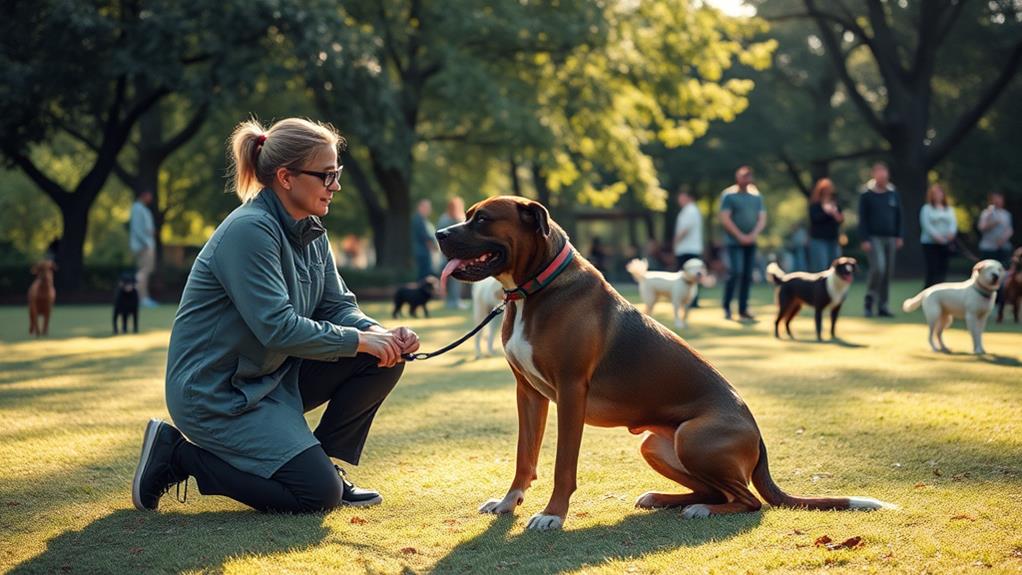
When it comes to managing aggressive behavior in dogs, understanding triggers is crucial. Observe your dog closely to identify what provokes their aggression. Common triggers include unfamiliar people, other dogs, loud noises, and certain environments. Knowing these can help you avoid potential conflicts and set your dog up for success.
Once you've identified the triggers, you can create a management plan. For instance, if your dog reacts aggressively toward other dogs during walks, consider using a muzzle as a temporary solution while you work on training. Redirecting their focus through positive reinforcement can also be effective. When your dog remains calm in the presence of a trigger, reward them with treats or praise.
It's essential to maintain a calm demeanor yourself. Dogs often pick up on your emotions, so staying relaxed can help ease their anxiety. Additionally, establish clear boundaries and rules at home. Consistency in your commands and expectations will reinforce your authority and help your dog feel secure.
Lastly, practice socialization gradually. Expose your dog to controlled situations where they can learn to interact positively with various stimuli, helping them build confidence and reduce aggressive reactions over time.
Professional Help and Resources
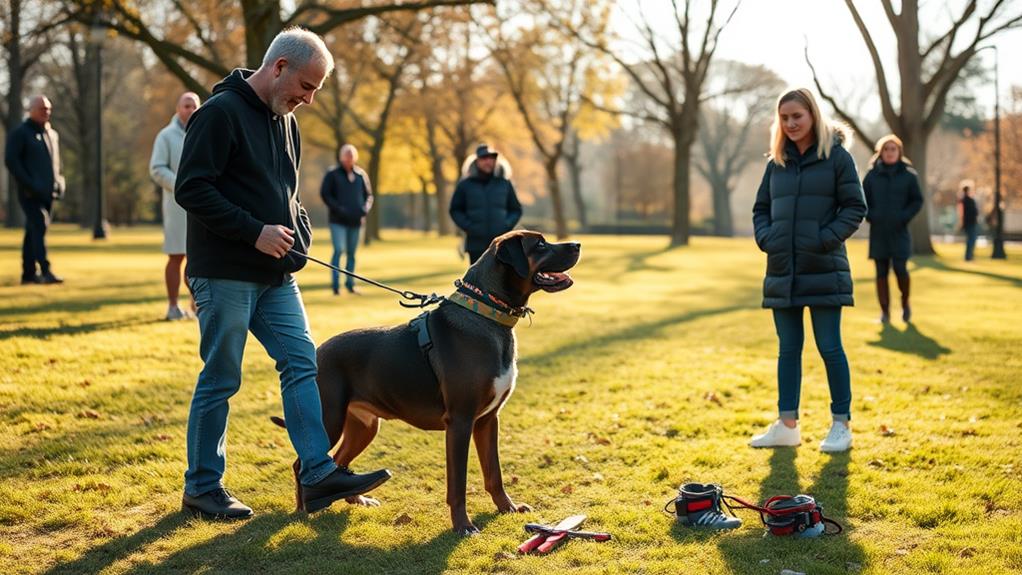
Recognizing when to seek professional help can greatly enhance your dog's training journey. If you notice persistent aggression despite your efforts, it's time to ponder outside resources. Professional trainers and behaviorists can provide the expertise you need to tackle complex issues.
Certified Dog Trainers: Look for trainers who specialize in aggression. They can tailor their approach to your dog's specific needs and help you implement effective strategies.
Veterinary Behaviorists: These professionals combine veterinary science with behavioral expertise. They can evaluate any underlying medical issues that might contribute to aggression and suggest appropriate treatments or medications.
Support Groups: Connecting with other dog owners facing similar challenges can be invaluable. Local or online support groups often share insights, experiences, and recommendations for trainers and resources.
Don't hesitate to reach out for professional assistance. Getting expert guidance can make a significant difference in your dog's behavior and your overall experience as a dog owner. Remember, you're not alone in this journey, and support is available to help you and your canine companion thrive.
The Importance of Patience
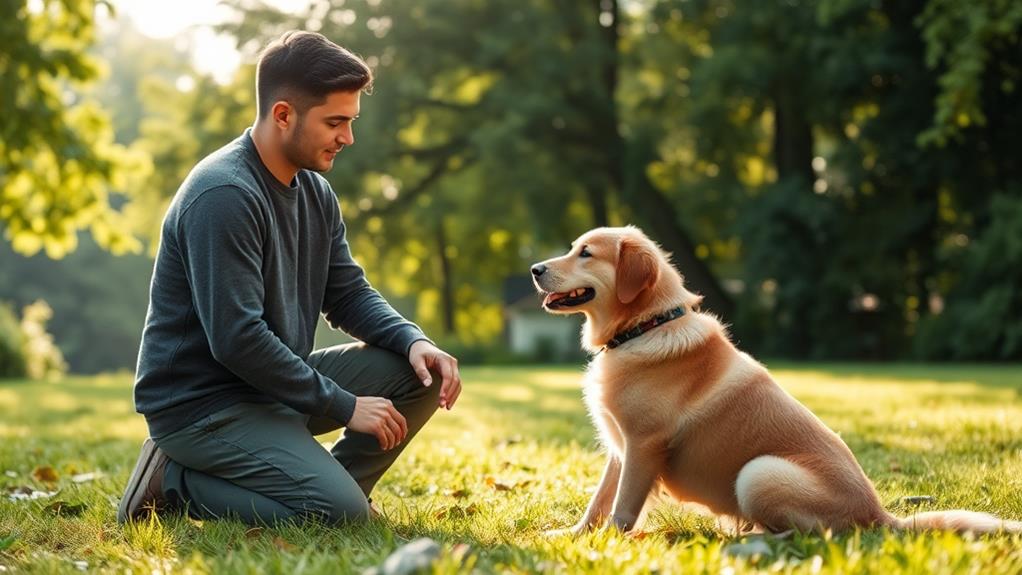
Training a dog to curb aggression requires you to hang in there and stay committed. It's indispensable to understand that this process won't happen overnight. Your dog needs time to learn, adapt, and trust you. Tolerance is vital; without it, you might inadvertently create more stress, leading to setbacks instead of progress.
Builds Trust: Strengthens the bond between you. Spend quality time together.
Reduces Stress: Creates a calm learning environment. Keep training sessions short.
Allows for Mistakes: Encourages learning from errors. Stay positive and understanding.
Reinforces Consistency: Establishes routine and reliability. Stick to a training schedule.
Encourages Progress: Allows gradual improvement in behavior. Celebrate small victories.
Incorporating tolerance into your training routine not only benefits your dog but also helps you develop better handling skills. Remember, each dog is unique, and their journey to curb aggression requires your unwavering support. Stay focused, and you'll see results.
Monitoring Progress and Adjustments
As you cultivate patience in your training approach, keeping a close eye on your dog's behavior becomes essential. Monitoring progress isn't just about observing; it's about understanding the nuances of your dog's reactions. Regular assessments help you determine what's working and what needs adjustment.
To effectively monitor your dog's progress, consider these three key aspects:
- Behavioral Changes: Note any shifts in your dog's aggression levels. Is there a reduction in growling or snapping during encounters? These small victories matter.
- Response to Commands: Track how your dog responds to training commands over time. Are they becoming more compliant and focused during sessions? Consistency here indicates improvement.
- Social Interactions: Observe how your dog interacts with other pets or people. Are they more relaxed and less defensive in social settings? Positive changes in behavior signal success.
As you gather this information, be prepared to make adjustments to your training techniques. If you notice stagnant progress, it might be time to try new strategies or consult a professional trainer. Your attentiveness will pave the way for a safer and happier canine companion.
Frequently Asked Questions
Can Certain Breeds Be More Prone to Aggression Than Others?
Yes, certain breeds can be more prone to aggression due to genetics and temperament. However, individual upbringing and socialization play significant roles, so it's vital not to judge solely based on breed.
How Long Does It Typically Take to See Improvements?
Improvements typically show within weeks, but you might notice changes sooner with consistency and patience. Regular practice, positive reinforcement, and understanding your approach can make a significant difference in your progress. Stay committed and observe closely!
Are There Specific Age-Related Factors Influencing Aggression?
Yes, age-related factors definitely influence aggression. Younger animals might act out due to fear or lack of socialization, while older ones could display aggression due to pain or changes in health. Understanding these factors is vital.
What Equipment Is Best for Training Aggressive Dogs?
When it comes to helping your spirited companion, consider using a sturdy harness, a head halter, and a long leash. These tools can enhance your bond while guiding your furry friend toward more positive behaviors.
Is Aggression Always Linked to Fear in Dogs?
Aggression isn't always linked to fear in dogs. Sometimes, it stems from territorial instincts, resource guarding, or learned behaviors. Understanding the root cause helps you address the behavior effectively and promote a safer environment.
Conclusion
In your journey to curb canine aggression, remember that patience is your guiding light. Like a gardener nurturing delicate blooms, you'll cultivate trust and understanding in your furry companion. Celebrate each small victory, watching as their once-furrowed brow softens into a gentle gaze. As you weave together training, socialization, and a safe environment, you'll create a tapestry of harmony, transforming aggression into a bond of loyalty and love, blooming brightly in the heart of your home.

